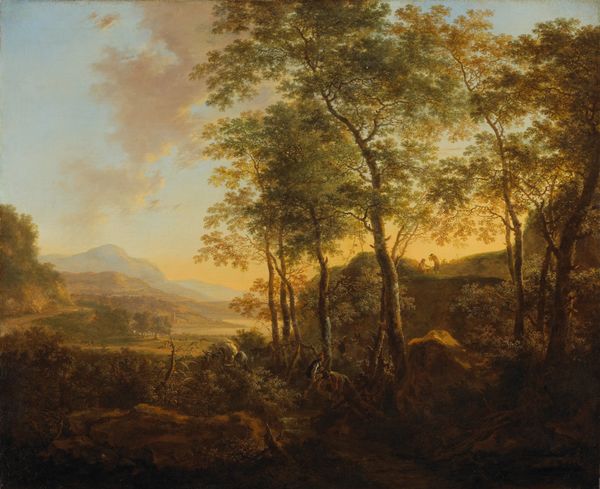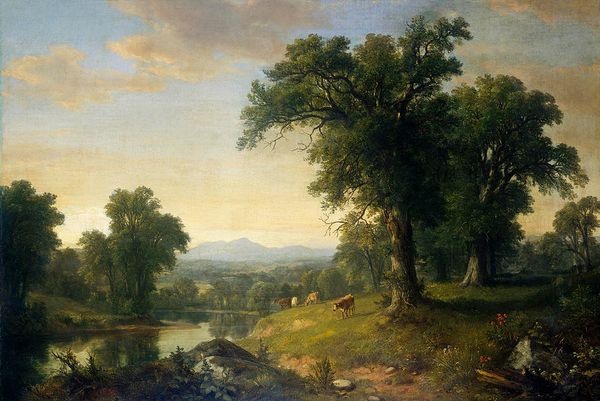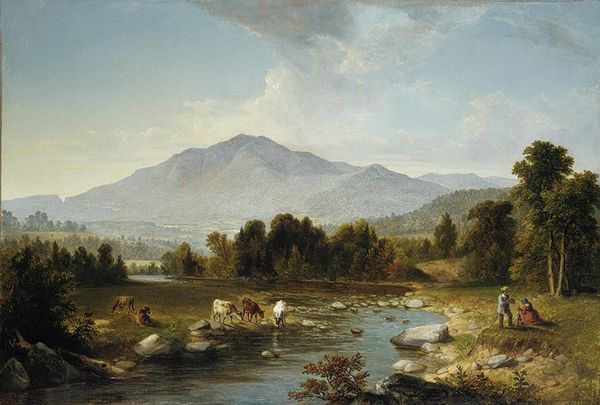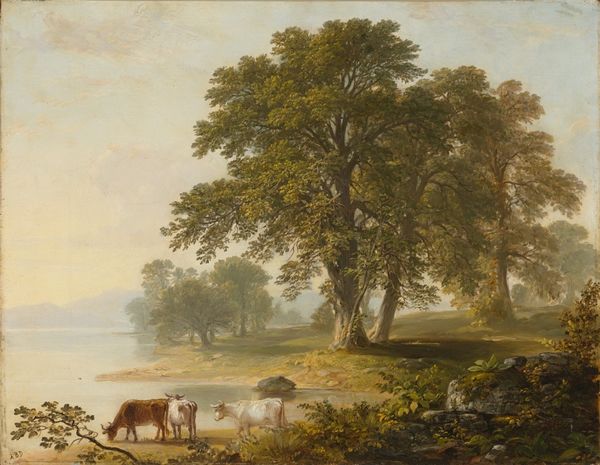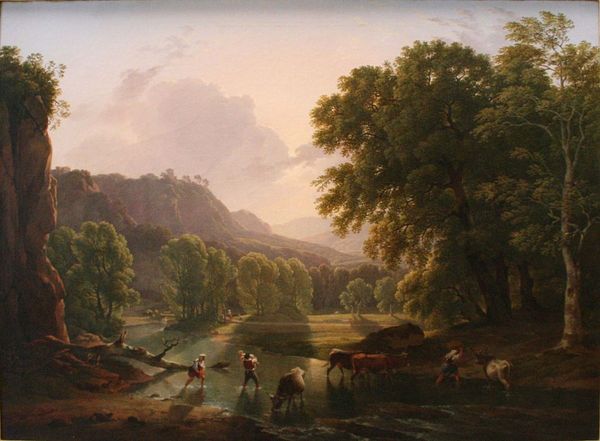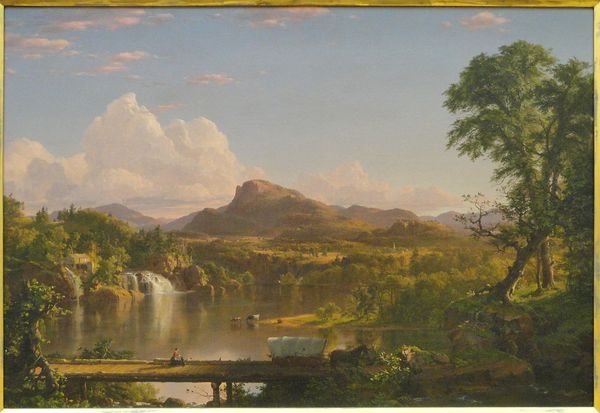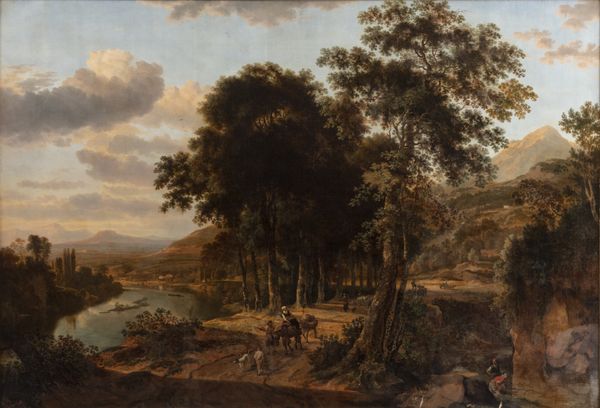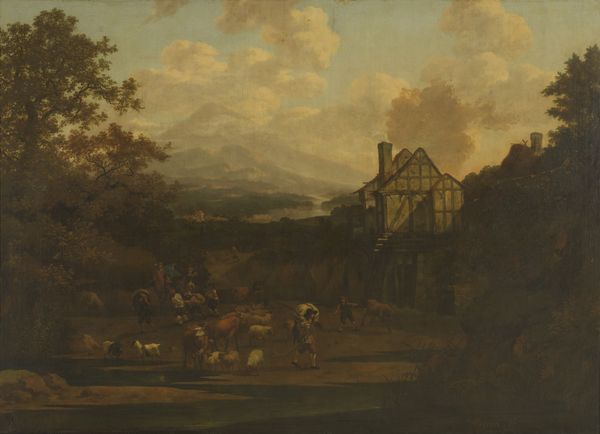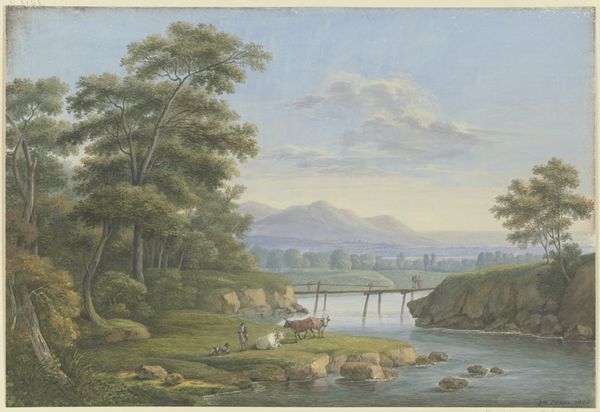
Dimensions: 21 1/8 x 34 1/2 in. (53.7 x 87.6 cm)
Copyright: Public Domain
Curator: This is Robert S. Duncanson’s "Landscape with Cows Watering in a Stream," an oil on canvas completed in 1871. Editor: It feels serene, doesn't it? The light reflecting off the water, the misty mountains in the background… it's like a nostalgic vision of the American landscape. Curator: Duncanson painted this relatively late in his career, a career that spanned the rise and solidification of the Hudson River School aesthetic. Think about what the landscape represents in the American imagination, the promise of expansion and opportunity… and who that promise excluded. Editor: Absolutely. It's crucial to acknowledge the romanticism coexisting with the harsh realities of westward expansion, particularly concerning Indigenous dispossession and environmental exploitation. This idyllic scene papers over those complexities. Curator: Exactly. Duncanson, as a Black artist working within a predominantly white art world, navigated these tensions. The very act of creating these idealized landscapes, arguably emulating European traditions, was a complex negotiation of identity and belonging. His lineage can be traced to the European painting tradition but is undoubtedly reshaped with Black originality in America. Editor: It's also interesting to consider how paintings like this reinforced certain social hierarchies, projecting an image of cultivated, picturesque nature under the stewardship of those who owned the land, in stark contrast with what that ownership meant. Curator: And consider the public reception of this image then: for whom was Duncanson creating this scene of tranquility? Were these artworks sites for white self-fashioning and identity formation? Editor: Reflecting on it now, "Landscape with Cows Watering in a Stream" becomes a focal point for broader discussions about landscape, identity, and power—and, of course, opens vital conversations about Black contributions to American art. Curator: I agree; through it, we're compelled to consider both the aesthetic appeal and the historical and cultural undercurrents shaping our understanding of American art history.
Comments
No comments
Be the first to comment and join the conversation on the ultimate creative platform.
